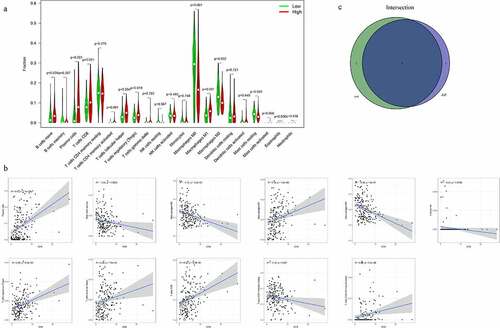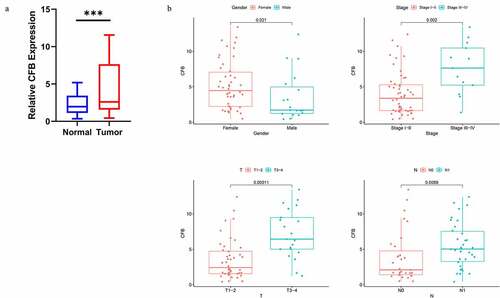Figures & data
Table 1. CFB expression associated with clinicopathological variables (N = 65)
Figure 1. Correlation of StromalScore and ImmuneScore with clinicopathological staging characteristics
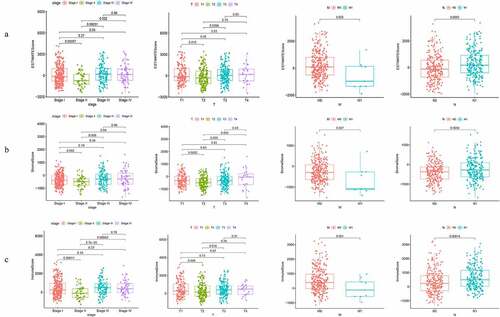
Figure 2. High score groups and low score groups and enrichment analysis of GO and KEGG for DEGs
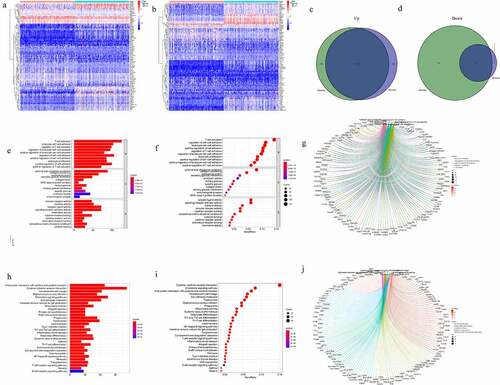
Figure 3. Protein–protein interaction network and univariate Cox regression analysis
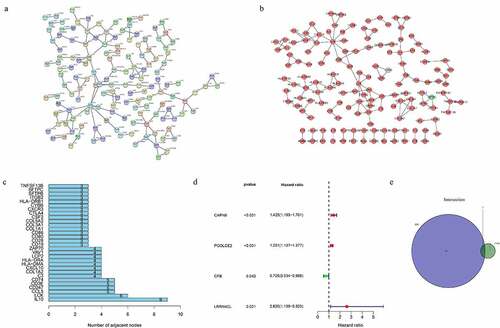
Figure 4. CFB expression levels and the survival and clinical correlation analysis of THCA patients

Figure 5. TIC profile and correlation analysis in TME
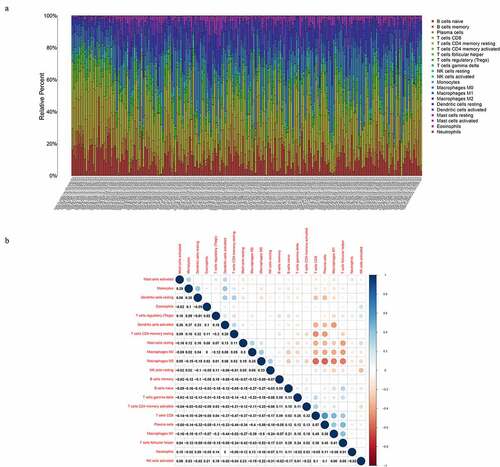
Figure 6. Correlation of immune cell infiltration levels with CFB expression
